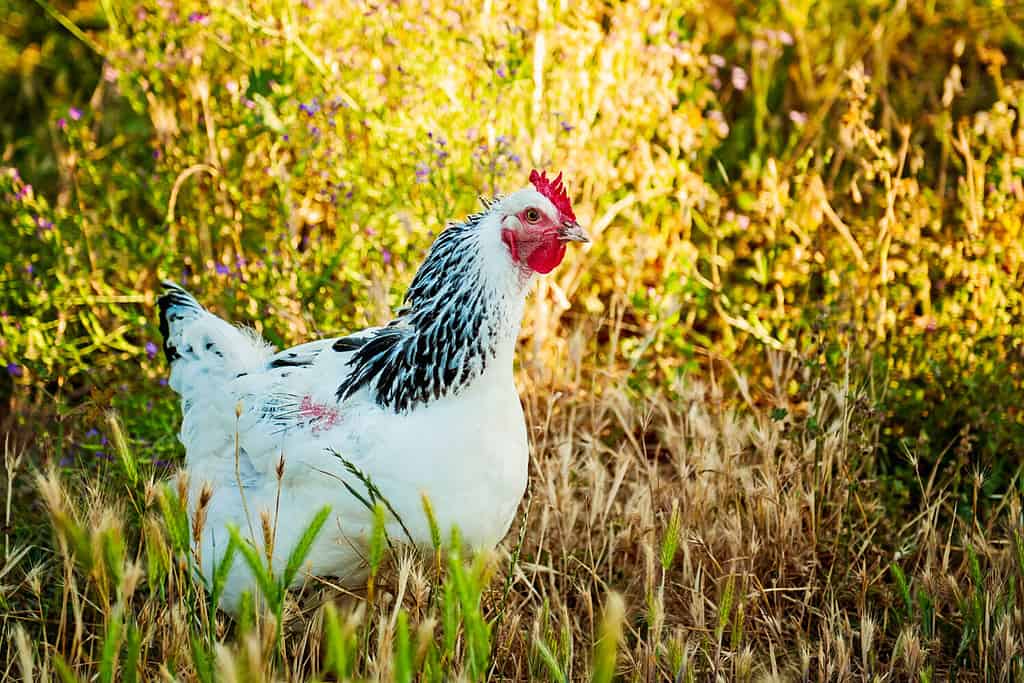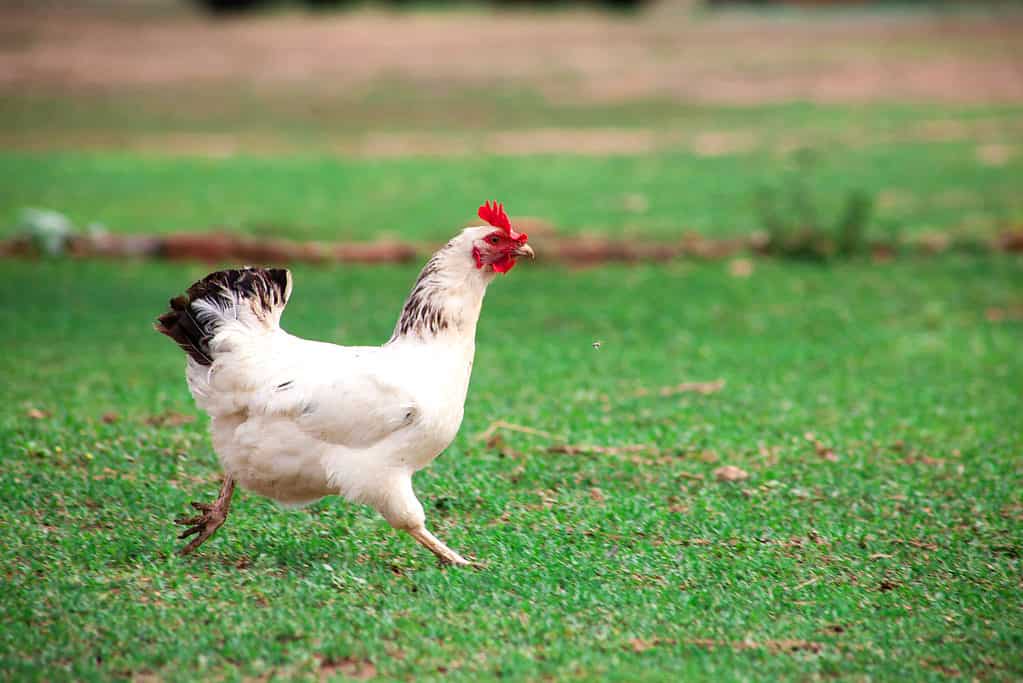Diatomaceous earth (DE) is a fine powdered form of hard-shelled microalgae known as diatoms. It has various industrial and food-related uses, such as eco-friendly insecticide. Its uses extend to chickens as a dietary supplement that also aids in preventing certain parasites when used in the coop.
If you are interested in giving diatomaceous earth to your chickens, allow this article to guide you through the process.
Diatomaceous Earth for Chickens: Safety, Uses, and Benefits

This powder is made from diatom fossils.
©marekuliasz/iStock via Getty Images
Is It Safe?
Diatomaceous earth is generally safe for chickens if it is food-grade and not pool-grade. You want to avoid using diatomaceous earth that contains harmful additives or fillers. Pool-grade diatomaceous earth contains high concentrations of crystalline silica, and it is calcined. Although this makes it a better filtering agent for pools, it is not safe for chickens.
Food grade is the safest for chickens, but there are still some downsides to be wary of. This type of DE is very dusty, and therefore not good for a chicken’s sensitive respiratory system. That’s why you should always remove your chickens from the coop before you dust it. This DE can have a drying effect on your chicken’s feet, leading to cracks or open wounds and paving the way for infections.
What Are Its Uses and Benefits?
- Non-toxic preventative for external parasites or insects on your chickens or in the coop
- Helps improve dust baths
- Helps to minimize the amount of harmful chemicals your chickens are exposed to
- Aids in better coop hygiene
Adding Diatomaceous Earth to Your Chickens Coop in 6 Steps

Food-grade DE is generally safe for chickens when used appropriately.
©Horse Crazy/Shutterstock.com
Below are six steps to take when using diatomaceous earth in your chicken coop.
1. Choose the Right Type
It’s important to only give food-grade diatomaceous earth to chickens, which should be indicated on the label. Avoid any pool-grade DE to avoid harming your chickens. The DE you choose should have less than 2% crystalline and be safe for agricultural and animal use.
You can find food-grade DE at your local grocery, health, and agricultural stores. It’s a bonus if it has a feed additive or organic use label.
2. Remove Your Chickens from the Coop
You don’t want to add diatomaceous earth to your chicken’s coop while they are still in it. The fine particles might be damaging to their respiratory systems when inhaled. Contain them in another safe area while dusting the coop.
3. Clean the Old Bedding
It’s important to clean your chicken coop before dusting the diatomaceous earth. All the soiled bedding should be removed. You can then start scraping and sweeping the excess dirt and deep clean the egg boxes. You can finish off the cleaning with a power washer or a disinfectant and scrub brush. Once everything has been cleaned, you should allow the coop to dry. Adding the DE while the coop is still damp might cause it to lose its effectiveness.
4. Wear Protective Gear
Just as diatomaceous earth is not good for chickens to inhale, it may not be good for you to inhale either. That’s why you should wear protective gear when dusting. Safety goggles and a mask will do and be sure to wear old clothing that you don’t mind getting dirty.
5. Add the Diatomaceous Earth
Once the coop has thoroughly dried and you are wearing your protective gear, you can begin dusting. You do not need to create a thick layer, as a fine layer on the coop’s floor will suffice. Try to also add the diatomaceous earth in nooks and crannies where mites or pesty insects could be hiding.
6. Replace the Bedding
Although you don’t want to add too much DE, you do want to layer up on the bedding. Once the dust has settled, you can begin adding a generous amount of clean bedding to your chicken’s coop. Layer on the bedding until the diatomaceous earth is no longer visible.
You can then allow your chickens back into the coop.
Can Chickens Eat Diatomaceous Earth?
Chickens can safely eat food-grade diatomaceous earth, however, the benefits of it as a dietary supplement are not entirely understood. What we do know is that it contains minerals such as calcium, iron, and magnesium. These minerals might be beneficial for chickens when used as a feed additive in moderation.
Plus, it’s natural and doesn’t pose many risks to your chickens if it is sprinkled over their food and not fed on its own. You can then shake the food to mix the DE particles into it. Doing so helps to minimize the amount of diatomaceous earth your chickens will inhale. The total ratio of DE to your chicken’s feed should be about 2% to 5%. Always be cautious when introducing new foods into your chicken’s diet.
Can You Add Diatomaceous Earth to a Chickens Dust Bath?

Chickens rely on dust baths to help keep their feathers and skin clean and for parasite control.
©iStock.com/Mironmax Studio
You could add food-grade DE to your chicken’s dust bath but be sure to do it with caution. As we already mentioned, the fine and sharp particles of diatomaceous earth might be damaging to your chicken’s respiratory system.
Chickens benefit from dust baths to keep their feathers clean. Adding a little bit of diatomaceous earth in their dust baths could help prevent external parasites, such as mites or lice. This is because DE has a drying effect on these parasites, causing them to dehydrate and die.
It is worth noting that, although diatomaceous earth is great at preventing or killing certain external parasites, it can also be quite drying to your chicken’s feet.
In Conclusion
Diatomaceous earth has several uses for chickens, whether it’s added to their coop, a dust bath, or their feed. In a chicken coop or dust bath, it helps prevent and kill certain external parasites. In feed, it provides additional minerals. Be sure to consult with a poultry veterinarian before giving DE to your chickens.
The photo featured at the top of this post is © Moonborne/Shutterstock.com
Thank you for reading! Have some feedback for us? Contact the AZ Animals editorial team.






